Seventy-five years ago, the Samuel Goldwyn masterpiece The Best Years of Our Lives premiered to universal critical and popular acclaim. Starring Dana Andrews (Laura, 1944) as Captain Fred Derry, Teresa Wright (Mrs. Miniver, 1942) as Miss Peggy Stephenson, Fredric March as her father Sergeant First Class Al Stephenson, and Harold Russell as Petty Officer Second Class Homer Parrish, the dramatic concern of the film is the demobilization of American soldiers, sailors, and airmen from the Second World War and their difficult economic, psychological, and conjugal reintegration with civilian life. This anniversary of the film occasions fresh critical reflection.
The plot centers around one newfound and one renewed romance. Upon demobilization, former bombardier CPT Derry returns to find that his coquettish wife has been unrepentantly unfaithful and that his former job as local soda fountain attendant has been dissolved amid urban economic transformation. An alcoholic evening with SFC Stephenson finds Fred in the arms of his amorous daughter Peggy, and the two begin to fall in love over the objections of her family and amid serious uncertainty concerning Fred’s future. Meanwhile, ex-sailor Homer Parrish struggles to discern whether the enduring affection displayed by high school sweetheart Wilma (Cathy O’Donnell) derives purely or primarily from the loss of both his hands, now replaced with prosthetic hooks. The two at length fully reconcile, and happily marry.
The critical result was seven Academy Award wins, including Best Picture, Best Director (William Wyler), Best Actor (March), and Best Supporting Actor (Russell). The final award was especially significant, given that real-life SGT Russell was made a double-amputee by a horrific ordnance accident at Camp Mackall, North Carolina. He subsequently appeared in the Army Pictorial Service documentary Diary of a Sergeant (1945) profiling his transformation, but otherwise had no acting experience when cast as a version of himself in The Best Years of Our Lives. A hymn, hope, strength, and consolation to a universe of returning veterans, the film therefore gave lasting utterance to the unforgettable experiences of the Greatest Generation.
Two overarching contrasts between past and present are in evidence. First, the successful leaders of World War II were unanimous in their determination to wage present and future war according to law. At the time, American constitutional and incipient international law were and were perceived as almost fully commensurate, without the enduring internal tensions so characteristically postured today. The Congress took very seriously its constitutional power to declare war, with the respective resolutions pertaining to imperial Japan (December 8, 1941) and then to Nazi Germany and fascist Italy (December 11), explicitly naming the enemy nation and declaring the newfound national war footing. Post-bellum, Congress also eventually undeclared these wars, via joint resolution (October 19, 1951) with regard to Germany and through Senate ratification (March 20, 1952) of a Multilateral Treaty of Peace with Japan.
These actions of the Congress in support of Presidents Franklin Roosevelt and Harry Truman furthermore conformed to existing international law. In The Rights of War and Peace (1625: I.iii.iv), Hugo Grotius defined solemn war as consisting of both formal approval according to the highest laws of the nation and official notification of hostilities to the enemy country, a formulation that probably influenced the terms of the then-prevailing Convention Relative to the Opening of Hostilities (1907), whereby a formal declaration of war must precede any armed attack. After the guns stopped in Europe and Asia, American leaders oversaw the development of three major international regimes to attempt to prevent the resurgence, or failing that to reduce the virulence of similar global conflagration. First, a Charter of the United Nations and Statute of the International Court of Justice (1945) resurrected the arbitration principles of the defunct League of Nations, but this time aided by dedicated American involvement and conditioned by heightened sensitivity to the realities of world power. Second, an International Military Tribunal for Germany (December 9, 1946 – July 19, 1947) convened under the authority of the Army and publicly charged 24 leading Nazis with conspiracy to wage war, the waging of war, war crimes—especially mass deportation for slave labor—and crimes against humanity, sentencing Hermann Göring, Wilhelm Keitel, Joachim von Ribbentrop, and nine others to death by hanging. Third, the 1949 revisions and expansions to the existing Geneva Conventions, among other alterations, enhanced standards governing the treatment of prisoners of war and recognizing the principle of non-interference with neutral and vulnerable populations, especially women and children.
With the passage of time, however, American war has become increasingly lawless. President Truman neither requested nor received a declaration of war or any kind of congressional authorization to use force in Korea (1950–53), while the famous Tonkin Gulf Resolution of 1964 simply “approves and supports the determination of the President, as Commander in Chief, to take all necessary measures to repel any armed attack,” a carte blanche for Lyndon Johnson’s escalating aggression throughout the former French Indochina. The respective Persian Gulf (1991), Afghan (2001), and Iraq (2002) invasions, meanwhile, were all based on use of force authorizations without constitutional declaration of war. Added to this remiss state of affairs is the disturbing appearance since 9/11 of neoconservative and liberal imperialist ideologies within the Republican and Democratic parties, respectively, that seek to provide it theoretical defense. The result is dangerous alienation from the indicative remarks of Brigadier General Telford Taylor, chief of counsel for war crimes at Nuremberg: “The trials are but one manifestation of the world-wide striving after what has been called ‘world order under the rule of law’” (Final Report to the Secretary of the Army, 1949: 219).
The returning veterans of those best years of American lives also agreed that peace was the fruit of national unity, maintaining an almost unrecognizable vigilance to preserve the public morals on such questions as civic duty, Christian behavior, and conjugal fidelity. Although the greatest realists who ever lived on account of their concrete understanding of power, they were also assiduous constructivists by reason of their overwhelming insistence upon good deeds as derivative of good words and thoughts. The Uniform Code of Military Justice (1949), standardizing the expectations to which the troops had lately been subject, prohibited “quarrels, frays, and disorders” (7), “any riot and breach of the peace” (116), and “contemptuous and disrespectful words” (88) directed against the president, the cabinet, the governor, and all in authority. It also threatened discipline against any “conduct unbecoming an officer and gentleman” (133). Having learned this respectful behavior in time of war, the demobilized veterans continued to apply it in time of peace. The civil, non-partisan, and ecumenical disposition of the churches reinforced this public moral code, as did, incredibly, the contemporary motion picture industry. From 1930 to 1955, American film was not merely rated, but censored, by means of a comprehensive Code to Govern the Making of Motion Pictures that stated, “No picture shall be produced which will lower the moral standards of those who see it. Hence the sympathy of the audience should never be thrown to the side of crime, wrong-doing, evil or sin.” Presented as a neo-levitical enumeration of criminal, violent, sexual, and nihilistic beliefs and behaviors that are to never, seldom, or but very discreetly be depicted in movies, this mid-century prohibition on cinematic wickedness and vice indisputably made possible the glorious artistic triumphs of the golden age of Hollywood, including its Technicolor musicals, the mysteries of Alfred Hitchcock, epic quests filmed on location, the Hobbesian jewels of Film Noir, and unforgettable dramas such as The Best Years of Our Lives. Along with the similar censorship code for comic books (1954), and the putative acceptance of these norms throughout all the professions at every level, the postwar peace was socially constructed on the basis of shared decency.
In conclusion, CPT Fred Derry may have merely been, as the character lamented, “the soda jerk.” But the comparative and international system to which he belonged was predicated on war according to law and peace as the fruit of unity. Both attributes should unite into a solemn watchword for the new generation.
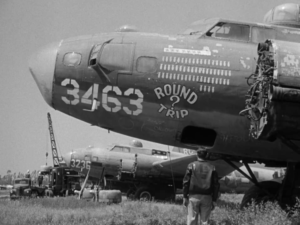
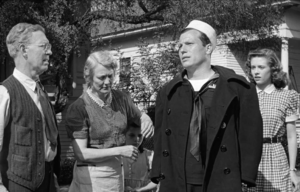

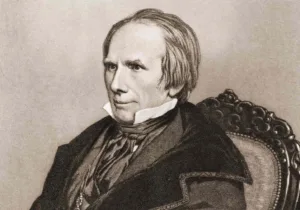
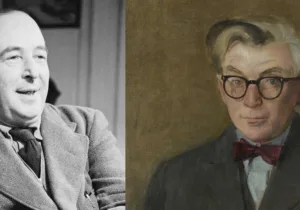
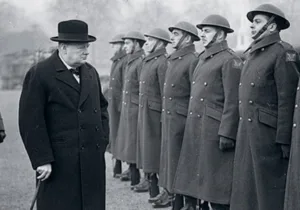
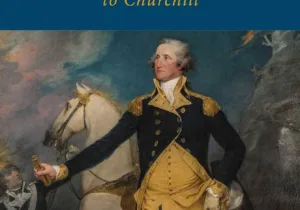

 Sponsor a student for Christianity & National Security 2024
Sponsor a student for Christianity & National Security 2024